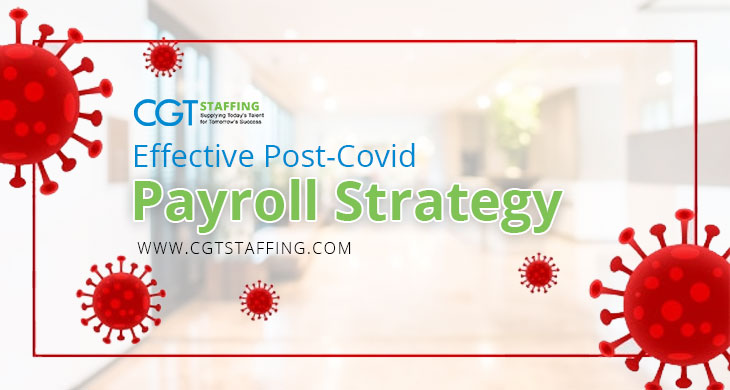Employee payrolls are some of the most significant expenditures in most business models. This makes it very challenging, even in the best of times, to keep payrolls sustainable. Of course, a post-COVID payroll strategy has several additional layers of complexity. Likewise, the margin for error is far narrower than usual.
If a business payroll becomes unsustainable, it can quickly threaten business solvency and continuity. Any strategy on payroll requires a focused approach in certain key areas.
All employer decisions impact employees. In the current business climate, the wrong decisions could quickly lead to unemployment. Amid shrinking revenue streams, businesses need to be very careful about the benefits and compensation plans that make up their payrolls.
Table of Contents
Structuring a Sustainable Post-COVID Payroll Strategy
Payroll strategies are always a crucial component to business success. However, under unusual circumstances like an unprecedented health crisis, they become even more complex. Pay strategies that worked before the pandemic may no longer be sustainable.
Moreover, being both overly pessimistic or optimistic can be equally devastating to helping your business survive the current business climate. In almost every case, businesses may need to reassess or even overhaul their pay strategy in three key areas, including:
Payroll Decisions Factoring in Uncertainty
With so much uncertainty on the horizon, businesses can’t be sure what the future holds. Circumstances could change quickly, leaving very little time for businesses to manage that change. However, since business sustainability has a strong correlation with change management, companies may have to start making tough decisions, including managing their costs more efficiently.
This can include transitioning to a centralized hiring program or even outsourcing it entirely to a staffing agency. IT could also involve putting a freeze on annual salary increases, bonuses, and, in extreme cases, a reduction in pay across the board.
These decisions will not be popular, so they should not be made lightly. It may prove challenging to juggle a sustainable payroll and workforce motivation, especially amid economic uncertainty, but it may be a necessity to ensure business survival.
Managing Pressures of Federal Assistance Loans
Workforces and payroll see incoming and outgoing employees all the time. Accordingly, your current talent acquisition strategies should focus on minimizing employee turnover and maximizing payroll efficiency. This in itself can often prove a tough challenge for many businesses.
During the pandemic, the federal government took several steps to help businesses stay solvent and continue paying their employees. The use of federal funds in programs like the Paycheck Protection Program and the Economic Injury Disaster Loans have helped to prevent a complete economic collapse. They are still loans, however, even at favorable interest rates. As such, they come with various restrictions that place additional pressures on businesses to keep payrolls sustainable.
Restructuring Compensation Models
Compensation models differ from business to business. After initial hiring, workers typically have their pay assessed at the end of the year based on several performance appraisal methods. The conventional business strategy holds that it is important to reward the best-performing employees for their hard work. Under the unique circumstances of our time, compensation models have to consider several other complexities as well.
The compensation model businesses ultimately arrive at depends on unique specifics. All business leaders and payroll managers need to start considering additional factors when designing models and strategies. This may call for attention to:
- Considering what the future of the business could look like.
- Examining your conventional salaries and benefits model for sustainability.
- Exploring benefits beyond the conventional ones that could prove valuable.
- Keeping your employees informed and remaining transparent.
- Exploring cost-cutting opportunities that could help retain workers on the payroll.
- Redefining performance evaluation for remote working and hybrid models.
